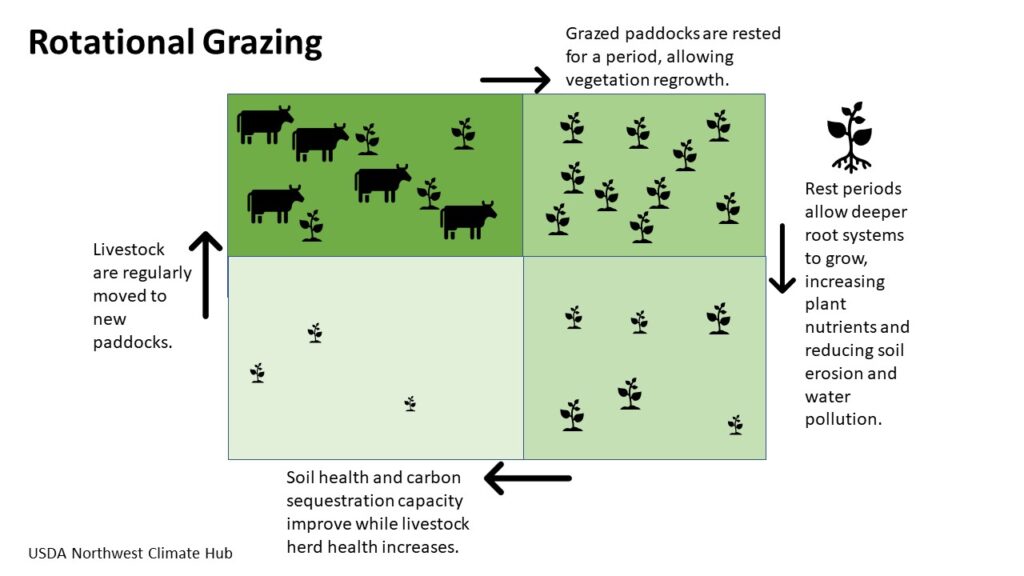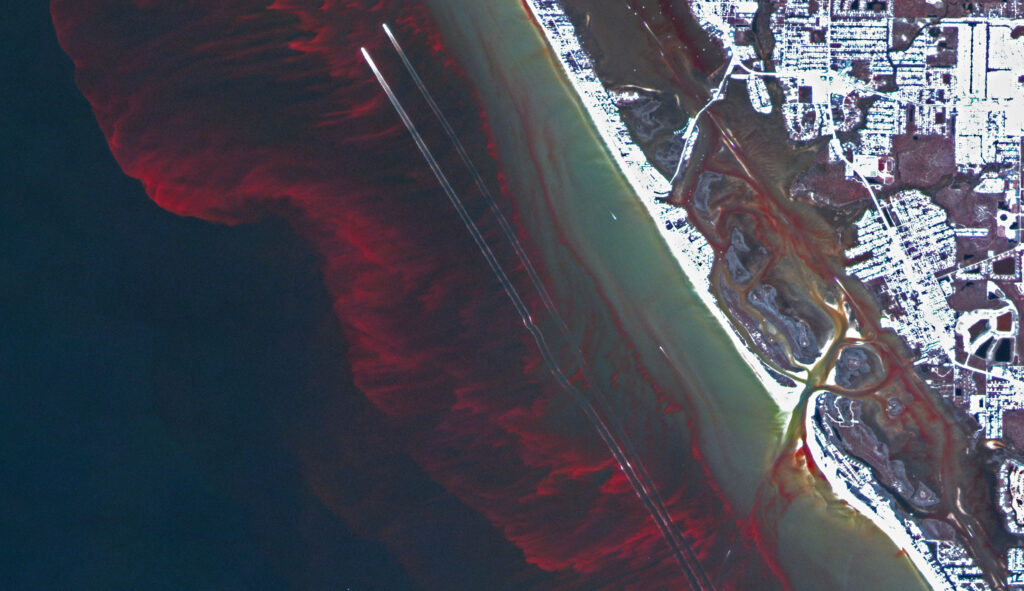Harmful algal blooms (HAB) happen when there’s rapid and excessive growth of toxin-producing algae in lakes, oceans, estuaries, or coastal waters. Algae blooms are a naturally-occurring process, and there are records of HABs from early European colonists who arrived in Florida in the 1500s. Algae, a diverse group of plant-like organisms, are an essential part of aquatic ecosystems because they use photosynthesis to produce the oxygen that’s needed to sustain life. Some algae also produce toxins, and high concentrations of these substances can harm people, animals, and the environment.
Toxins and Hypoxia
In addition to producing toxins, HABs use up the oxygen that’s in the water. That’s because when algae blooms die, the bacteria that decomposes this organic matter also lowers oxygen levels. In some cases, vast stretches of open water experience hypoxia, meaning that the oxygen levels are too low to sustain life. In areas such as the Gulf of Mexico, hypoxic “dead zones” have killed shellfish, corals, fish, and aquatic plants. HABs also occur in bodies of fresh water such as Lake Erie.
What Causes HABs?
HABs are triggered by a combination of environmental factors. These include:
- warm temperatures
- abundant sunlight
- slow-moving or stagnant water
- nutrient pollution
Nutrient pollution has various sources, including chemical fertilizers, animal manure, failing septic tanks, and sewage treatment plant discharges. Algae need nitrogen (N) and phosphorous (P) to grow, and these sources of nutrient pollution provide both chemical elements in overabundant amounts. Remember that it’s the amount – and not the presence – of N and P that is the problem.
Manure Management and Rotational Grazing
Waters that are contaminated with HABs can be treated with chemical, biological, or mechanical methods. Yet an ounce of prevention is worth a pound of cure. Farmers and ranchers are part of the solution because, through proper manure management, they can help reduce agricultural run-offs. Because HABs pose risks to livestock, the stakes are high and the problem isn’t just downstream.
Farmers and ranchers alone can’t keep HABs from happening, but they can store and use manure in a way that protects nearby water sources. In addition to minimizing runoff into streams and wetland, best practices include spreading manure onto crops or pasturelands and using rotational grazing to prevent the accumulation of manure and the removal of grasses that help reduce runoff. Avoiding excessive concentrations of animals in one place is also helpful.

Cows, Algae, and Independent Thinking
Just as it’s unfair to call cows major contributors to climate change, it’s incorrect to see algae as either “good or bad”. In the proper concentrations, algae are a valuable part of aquatic ecosystems. These plant-like organisms are also potential sources of food and fuel. HABs are a problem, of course, but the truth about cows and algae isn’t black and white like a Holstein cow. Go Natural Education encourages to you think critically – and to think for yourself.



